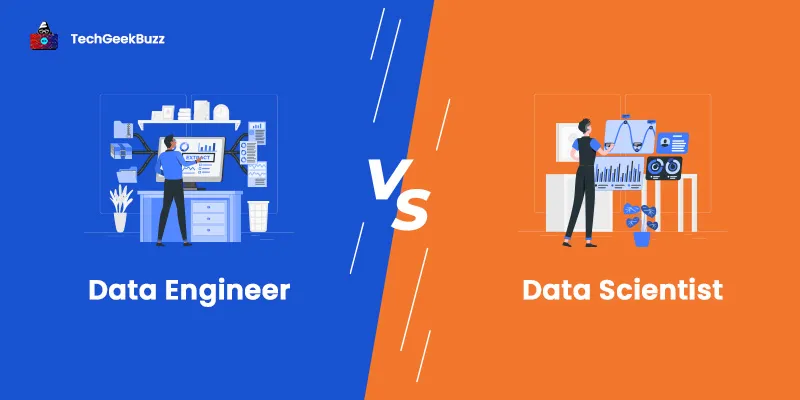The data collected is initially raw and cannot be utilized for business operations. Thus, it becomes necessary for companies and organizations to convert the raw data into meaningful insights, and this is where data wrangling comes into the picture. Today, every business relies heavily on data.
Companies and organizations process data to get insights that assist in making better business decisions. Therefore, having the right set of data can make a major difference in the growth of a business. Also, it is important to note that if the data collected is incorrect; it may lead to unnecessary business risks and significant downfalls.
With data wrangling, businesses can process data to extract meaningful information. Also, businesses utilize actionable data to carry out data analysis and generate predictions.
This article will introduce you to data wrangling, its typical examples, the need for it, and some prominent data wrangling tools. Also, you will get to know the different steps involved in the data wrangling process.
What is Data Wrangling?
Data wrangling, also known as data munging or data cleaning, is a process of cleaning, organizing, and enriching the collected raw data into a more refined format. Business analysts and data scientists use this refined format of data to make accurate and wise business decisions.
The data munging process is quite time-intensive as it involves multiple iterative steps. Not every business project needs to have the same data wrangling process, as it entirely depends on the type of project, its goals, and the type of data leveraged. Therefore, we can define data cleaning in three steps:
- Collecting data from various sources.
- Assembling data together.
- Cleaning data to find inaccuracies and missing elements.
There are two approaches to carrying out data wrangling, namely manual and automated. The manual approach is suitable for small data sets. On the other hand, the automated approach is ideal for extensive data sets.
Large-scale organizations employ a data science team or data scientists to perform data wrangling. However, even non-data professionals carry out data cleaning in small firms and startups. Having a solid knowledge of programming languages, such as Scala, PHP, and SQL is essential for performing data wrangling. In addition, an in-depth understanding of statistical languages, such as R or Python, is also mandatory.
Data Wrangling Tools
Several tools are available to carry out the process of data cleansing. Some of the most popular data wrangling tools are:
- Tabula : This data munging tool is ideal for all types of data.
- Spreadsheets / Excel Power Query : It is a manual data wrangling tool.
- Google DataPrep : It is a data cleaning tool that explores, cleans, and makes the data ready in a usable format.
- Data Wrangler: A tool that cleans and transforms data.
- OpenRefine : It is an automated Java-based data wrangling tool that cleans data.
Data Wrangling Examples
Some typical examples of data wrangling are:
- Collecting data from various data sources in one location for analysis.
- Determining empty fields in the data set and either assigning them with values or discarding them.
- Eliminating unwanted and irrelevant data.
- Detecting critical outliers in data and either deleting them or describing the inconsistencies.
Moreover, companies use data munging to:
- Determine corporate fraud.
- Ensure accurate data modeling results.
- Support data security.
- Carry out customer behavior analysis.
- Significantly reduce the time required for preparing data for the data analysis process.
- Identify data trends and patterns.
Need for Data Wrangling
The approach to enhance the value of raw data collected from heterogeneous sources is data wrangling. It helps in improving the data usability by transforming the raw data into the desired format. Moreover, it seamlessly assembles data from different sources, like databases, web services, spreadsheets, files, and so on.
Businesses collect user or customer data from various sources and store it on various systems across different folders, files, spreadsheets, and so forth. Such storage of data may result in data redundancy, data inconsistency, and data loss. Therefore, storing all business data in a centralized location is essential for smooth and effective business operations and determining what is going on within the business.
Data wrangling helps in piecing data stored across various systems. Also, it cleans the data, adds missing facts, and converts data into valuable business information.
Steps Involved in Data Wrangling
It is an iterative process and involves six steps that are explained below:
1. Discovering
Discovering means making yourself familiar with the collected data. You need to look into the data and understand what it includes and what part of the data can be utilized. To make it more simple, discovering is similar to looking into a refrigerator for the ingredients required to cook your meal.
Let us look at another more precise example to understand the data discovery step. Consider the customer data. Discovering involves what products did customers buy, location details, and so on. While you walk through the raw data, you can detect missing or incomplete elements and identify data trends and patterns.
2. Structuring
Raw data is not in a usable format because either it is incomplete or in an incompatible format. Therefore, structuring or organizing the raw data into the desired format is an important step. Structure the raw data into the format that is compatible with the analytical method you choose for analyzing data.
3. Cleaning
After converting the data into the desired state, now it is time to clean that data. This step involves the elimination of errors that can mislead the further data analysis process. Some of the typical cleaning activities include deleting empty rows, assigning values to NULL fields, and standardizing inputs.
4. Enriching
Once you eliminate as many errors as possible from the data, you need to determine whether your data contains all the necessary information required for the project. If not, you need to enrich your data by collecting the required data or missing values from other data sets. If you enrich or augment your data, it becomes essential to follow the above three steps for the augmented data.
5. Validating
As its name suggests, this step involves verifying the data and ensuring that the collected and processed data is of high quality with minimal inconsistencies. If there are any inconsistencies, you need to fix them. Otherwise, it is ready for the analysis process.
6. Publishing
The final step in data wrangling is publishing or making the validated data available to everyone involved in the data analysis process within the organization. Moreover, the format for publishing the validated data entirely depends on the goals of the organization and the type of data.
Here is a simple example that illustrates how data wrangling is essential and how it converts any raw data into easily readable and valuable insights. Let us take customer data in the form of a table as shown below:
| Name | Phone | Birth Date | State |
| John, Brown | 435-445-2345 | June 12, 1978 | Tx |
| George Williams | +1-345-234-5678 | 12/04/1988 | LA |
| Bartley, Smith | (867)234-7689 | 1988-08-17 | California |
| Jacob Alan | 345-7688 | 16/09/1976 | Texas |
| Brown, Oliver | 2344657896 | NULL | Oh |
Result Table
The below table is obtained after performing data munging on the above data set:
| Name | Phone | Birth Date | State |
| John Brown | 435-445-2345 | 1978-06-12 | Texas |
| George Williams | 345-234-5678 | 1988-04-27 | Los Angeles |
| Smith Bartley | 867-234-7689 | 1988-08-17 | California |
When you apply data wrangling to the first table, you get a formatted result table. The result table involves all names in the ‘first-name last-name’ format, phone numbers in the ‘area code-XXX-XXX’ format, birth date in the ‘YYYY-MM-DD’ format, and the full name of the state. However, the data of Jacob Alan is eliminated from the table, as the area code in the ‘Phone’ column is missing. Similarly, the birthdate field of Oliver Brown is NULL. Hence, it is discarded from the result table.
Conclusion
Data, being a pivotal element of any business, has to be highly accurate and authentic. Data wrangling helps companies convert seemingly non-useful and scattered data into actionable information, which assists in making smart business decisions. Moreover, this transformed valuable data allows data analysts to carry out the data analysis process smoothly.
Hopefully, this article provided you with all the information that you need to understand data wrangling better. Also, feel free to share your thoughts in the comments section below.
People are also reading:





Leave a Comment on this Post